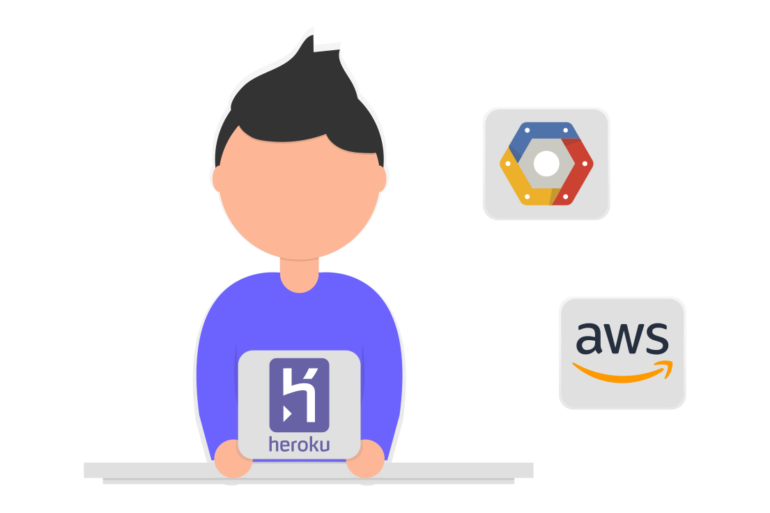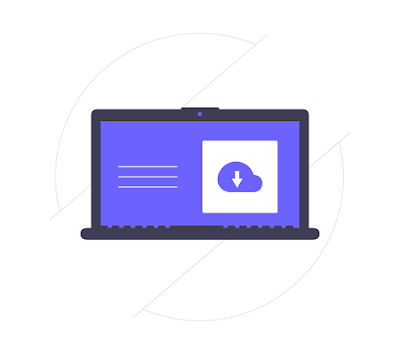The word “Cloud” refers to all of the things that can be remotely accessed over the internet. Typically, the Cloud refers to all the servers that are accessed over the internet and also the software and databases that run on those servers. Anything that is stored in the Cloud is actually stored in the internet servers instead of the hard drive of any computer or technology.
What is Cloud Computing?
Cloud computing is an application-based software with an on-demand availability of all the computer system-related resources such as the data storage and computing power system, without direct active management by the user. It is a software system that allows access to shared networks of servers, storage and applications over the Internet. Cloud computing processes data which is provided by a privately owned cloud service or a third-party cloud provider.
All the data stored in the Cloud is actually stored in remote servers that can be accessed through the internet. Cloud is simply a collection of several servers housed in massive, land-filling complexes that are owned by some of the world’s largest organizations such as Google, Microsoft, Amazon, and Apple. In simpler words, it means that our data is stored in the servers that we can access only over the internet through any web browser. Users access cloud services either through a browser or through any application, that is connected to the cloud over the internet through many interconnected networks.
Rise of Cloud Computing
The Cloud computing application gained attention because by using cloud computing, users no longer had to either manage physical servers themselves or run software applications on their own systems. Instead, all their data could now be stored in servers that were managed by the big companies. The Cloud also enabled users to access the same files and applications from almost any device without losing any of their important stuff. This was made possible because the data fed by the user was not stored in any physical hard drive but because all the computing and storage took place on servers in a data centre.
Even for businesses and companies, the switch to cloud computing resulted in a profitable way as it reduced some of their overhead and IT costs. This was because they now no longer had to manage their own physical servers and hence, they no longer had to update or maintain their own servers. Cloud computing even enabled companies to operate from any part of the world and from any device because they could now have access to all the files and applications from any location. Also, Cloud Computing proved to be a boon for those small companies who may not be able to afford their own server infrastructure but can now outsource their server requirement using the cloud.
Working of Cloud
Cloud Computing became possible because of Virtualization which allows for the creation of simulated, digital virtual computers which work the same way as a physical computer does. Such virtual computers are termed as virtual machines and they have similar capabilities that a physical computer with hardware. The virtual machines are so properly implemented that even when on the same host machine, they don’t interact with one another and hence the files and applications of one virtual machine is not visible to the other machine.
These machines do make use of the hardware using them more efficiently. Many virtual machines run on a single server and hence give output of several servers. Thus, Cloud servers can offer their services to more customers with less physical machines. Also, if any server goes down then cloud servers make it possible for making the data stored in that server accessible through other server machines as the services are generally backed up on multiple machines and also across different locations.
Types of Cloud Deployment
The cloud deployment can vary depending on where the cloud servers are and who manages them. The different types of Cloud Deployment are:
- Private Cloud:
A Private Cloud is a distributed network, server or data centre that is completely dedicated to any organization. - Public Cloud:
A Public Cloud is a service that may include servers housed in one or more data centres. These are generally shared by multiple organizations. In Public Cloud, using virtual machines, an individual server is shared by many organizations. - Hybrid Cloud:
In the Hybrid Cloud deployment type, the private and public clouds are combined any may even include on-premises legacy servers. An organization may use their both private and public clouds for different services or may even deploy public cloud as a backup for their private cloud. - Multi-Cloud:
It involves using multiple cloud platforms. In Multi-cloud deployment, an organization rents several virtual servers or databases from several vendors and in different servers, they do carry out different services.
Service Models of Cloud
Depending on the different services that a company provides, the cloud service models may range:
- Software-as-a-Service (SaaS):
In this type of service model, the companies host all their software applications on the cloud itself thus enabling users to access all their services over the internet. In this type of service model, the users can simply use the application without installing it on their device. Example of SaaS include Salesforce and Slack. - Platform-as-a-Service (PaaS):
In this service model, companies pay for things that are required by them for building an application including development and infrastructure tools, and operating systems over the internet. In this service model, the application is not hosted on the cloud. Examples of PaaS include Microsoft Azure. - Infrastructure-as-a-Service (IaaS):
In this service model, the company rents the servers and the storage cloud platform from a cloud provider and build their application using their tools. Examples of IaaS include Google, Open Stack. - Function-as-a-Service (FaaS):
It is a server-less computing model which breaks cloud applications into smaller parts and they only run when their function is needed. This service model is called serverless because they don’t run on any dedicated machines and also because the companies building their applications don’t have to manage any servers.

